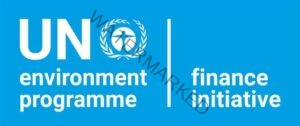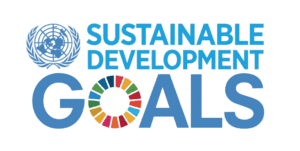Poverty Eradication Challenge
Global Poverty Eradication Challenge
United Nations' Sustainable Development Goals (SDGs)
Global Poverty Eradication Challenge
Global Poverty Eradication: A Comprehensive Approach to Ending Poverty Worldwide
Poverty eradication remains one of the most pressing global challenges, intricately linked to various social, economic, and political factors. The issue is deeply woven into the fabric of both developing and developed nations, making it a global priority. Active efforts to combat poverty have been recognized by the United Nations through their Sustainable Development Goals (SDGs), with No Poverty being the first and foremost goal in the UN 2030 Agenda. Let’s delve into the complexities of poverty, addressing its causes, types, impacts, and global efforts to eradicate it.
Understanding Poverty: Definitions and Measurements
Poverty is a multidimensional phenomenon, affecting various aspects of life including income, education, health, and living standards. It is traditionally measured using the poverty line, which refers to a threshold below which individuals are unable to meet the basic necessities of life, such as food, clothing, and shelter. People living below the poverty line often experience severe deprivation of resources and opportunities.
The World Bank defines extreme poverty as living on less than $2.15 per day, and this measure has been instrumental in tracking the global progress of poverty eradication. However, poverty is not only about income. The concept of multidimensional poverty includes other forms of deprivation such as lack of access to healthcare, clean water, education, and secure housing.
No Poverty (United Nations’ SDG 1)
The United Nations Sustainable Development Goal 1, No Poverty, aims to eradicate extreme poverty worldwide by 2030. This goal seeks to ensure that everyone, everywhere, has access to basic necessities like food, shelter, and healthcare, while also promoting social protection systems and equal economic opportunities.
Ending global poverty is crucial because poverty undermines health, education, and economic stability, perpetuating cycles of disadvantage and hindering societal progress. Moreover, poverty is interconnected with other challenges such as inequality, climate change, and conflict, meaning that alleviating poverty can have wide-ranging positive impacts.
Global cooperation is essential to address this complex issue effectively. Countries, international organizations, businesses, and communities must collaborate to share resources, knowledge, and strategies. By working together, the world can implement comprehensive solutions that address the root causes of poverty, ensure sustainable development, and create a more equitable and prosperous future for all.
Zero Hunger (United Nations’ SDG 2)
The United Nations Zero Hunger Sustainable Development Goal (SDG 2) aims to end hunger, achieve food security, improve nutrition, and promote sustainable agriculture by 2030. This goal addresses the urgent need to ensure everyone has access to safe, nutritious, and sufficient food, especially in vulnerable regions.
Global cooperation is essential because hunger and poverty are interconnected, transcending borders. Countries must work together to combat food insecurity, climate change, and economic inequalities, which are key drivers of hunger. Ending global hunger can lead to healthier populations, increased productivity, and more stable, resilient societies. Addressing this issue collectively will help build a world where no one is left behind, ensuring a better future for all.
Types of Poverty
- Absolute Poverty: Refers to the severe lack of basic human needs, such as clean water, food, and shelter. This type of poverty is often measured using the international poverty line.
- Relative Poverty: Occurs when people are poor in relation to the wider society they live in. They may have basic needs met but still lack access to resources and opportunities compared to others around them.
- Chronic Poverty: People trapped in long-term poverty due to enduring circumstances, such as geographic isolation, long-term unemployment, or ongoing social inequality.
- Urban and Rural Poverty: While urban poverty arises in cities where living costs are high but job opportunities may be scarce, rural poverty is often associated with poor infrastructure, lack of access to markets, and reliance on agriculture with minimal income.
Causes and Reasons for Poverty
The causes of poverty are complex and varied, depending on regional and national contexts. However, some common reasons for poverty include:
- Lack of education: Education plays a crucial role in poverty eradication. A lack of access to quality education limits employment opportunities, perpetuating the poverty cycle.
- Unemployment: High unemployment rates, especially in poorest states or regions, contribute to poverty, as many individuals are unable to earn a stable income.
- Social Inequality: Poverty and inequality are closely linked, with systemic discrimination based on race, gender, or ethnicity often relegating certain groups to lives of poverty.
- Economic Instability: Poor economic management and slow growth in poor countries weaken the ability of governments to provide social safety nets or create job opportunities, thus keeping citizens under the poverty line.
- Health Crises: Impact of poverty on health is significant, as poor people have limited access to healthcare, and diseases often perpetuate poverty. This is particularly evident in regions where infectious diseases like malaria or HIV/AIDS are prevalent.
- Natural Disasters and Climate Change: Natural disasters disproportionately affect the poor, as they have fewer resources to recover. Climate change also exacerbates poverty by affecting agricultural productivity, especially in low-income, agrarian regions.
Impact of Poverty on Education and Health
Poverty severely impacts both education and health outcomes. The impact of poverty on education is profound, as children from poor families often lack access to schools or the resources to stay in school. They may be forced to work at a young age to support their families, further perpetuating the cycle of poverty. Education is one of the most effective tools for breaking out of poverty, yet for many, it remains inaccessible.
In terms of health, poverty results in poor nutrition, lack of access to clean water and sanitation, and limited healthcare services. The impact of poverty on health can be fatal, as people living in poverty are more susceptible to illness and less able to afford medical treatment, leading to higher mortality rates in poor countries.
Global Efforts Toward Poverty Eradication
The international community, led by the United Nations, has recognized poverty eradication as a central goal. The United Nations Sustainable Development Goals (SDGs), particularly SDG 1: No Poverty, set an ambitious target of ending poverty in all its forms by 2030. The UN SDG framework encourages countries to address both the economic and social dimensions of poverty by:
- Promoting sustainable development practices that create economic growth while ensuring environmental sustainability.
- Reducing inequality within and among countries to ensure that no one is left behind.
- Supporting active measures against poverty through financial aid, social protection programs, and partnerships that focus on reducing vulnerability.
Role of Sustainable Development in Poverty Eradication
Sustainable development is key to eradicating poverty. Without sustainable practices, economic growth can be fleeting, leading to further environmental degradation and social inequality. The UN 2030 Agenda calls for integrated solutions that address poverty through a balance of economic development, social inclusion, and environmental protection. This includes improving infrastructure, increasing access to education and healthcare, and creating economic opportunities, especially in poor countries and regions with high rates of poverty worldwide.
Active Support Against Poverty
Active support against poverty comes from various sectors, including governments, international organizations, NGOs, and private businesses. This support takes the form of financial aid, policy reform, social safety nets, and grassroots movements aimed at empowering communities. Programs that provide access to microfinance, for example, enable individuals in low-income areas to start small businesses, creating a path out of poverty.
International partnerships like those encouraged by the UN SDGs are vital for sustaining progress. Such collaborations foster innovation in poverty reduction strategies and create platforms for knowledge sharing and best practices.
Eradicating poverty is an enormous yet achievable task. It requires a concerted effort from all sectors of society, with a particular focus on addressing the root causes of poverty and ensuring that everyone, regardless of background, has access to opportunities for growth. Through the implementation of the United Nations Sustainable Development Goals and the UN 2030 Agenda, the world can work toward a future where poverty worldwide is eradicated, and every individual can enjoy a life of dignity, opportunity, and security.

- Palestine Israel Conflict: A Historical Background Since 19th Century
- Global Conflict Escalation & Potential for a 3rd World War
- Social Justice: Envisioning a Futuristic Egalitarian Society
- Freedom and Democracy: Pillars of a Thriving Society
- Global Poverty Eradication Challenge & Way Forward
- Global Peace & Disarmament Challenge in the 21st Century
- Climate & Environment: Our Collective Responsibility
- Gender Equality Challenge (SDG 5)
- Quality Education for All: A Focus on SDG 4
- Future of Affordable and Clean Energy (SDG 7)
- India’s Democracy at a Crossroads: Crisis or Evolution?
17 Development Goals 17 Sustainable Development 17 Sustainable Development Goals 17 Sustainable Development Goals SDG 17 Sustainable Goals 2030 Agenda Commission On Sustainable Development Development And Sustainable Development Development Sustainable Development Durable Development MDG Millennium Development Goals MDGS Goals Millennium Development Goals SDG Development SDG Goals SDG Of UN SDGs Sustainable Development Goals SDG Sustainability SDG Sustainable SDG Sustainable Development Goals SDG Un SDG United Nation Strategic Development Goals Substantial Development Sustainability And Development Sustainability And Sustainable Development Sustainability SDG Sustainable Development Sustainable Development Goals Sustainable Development Goal SDGs Sustainable Development Project UN 2030 Agenda UNDP SDG UNDP SDGs UNDP Sustainable Development Goals United Nation SDG United Nations Organization Sustainable Development Goals United Nations SDG United Nations Sustainable Development Goals United Nations Sustainable Development Goals (SDGs) United Nation Sustainable Development Goals UN SDG UN SDGs UN Sustainable Development Goals Un Sustainable Development Goal SDG
- Home
- Act of Kindness Video Contest 2025
- Become A Volunteer
- Contact Us
- Donate Now to Support Our Cause
- Fundraising & Digital Marketing Support for Nonprofit Organizations in 2025
- Global Youth Ambassadors' Summit 2025
- News & Reports
- Our Causes
- Drinking Water for Humans & Animals of Drought-Stricken Thar Desert
- Educate a Girl in Pakistan & Give Her a Future
- Help a Family Caught in a War-Zone
- Help Protect a Child Caught in a War-Zone
- Help us Give the Gift of Sight to a Million Poor Blind Children in Pakistan
- Plant a Commemorative Tree to Help us Fight the Climate Change
- Our Mission
- Global Peace and Disarmament Challenge in the 21st Century
- Global Peace and Disarmament: Building a Safer, Inclusive, and Sustainable World in the 21st Century
- Redefining Terrorism for Lasting Global Peace
- Reforming the United Nations for Lasting Global Peace
- The Escalating Global Conflicts and the Looming Threat of a 3rd World War
- Our Vision
- World Peace Ambassadors' Summit 2025
INTERNATIONAL PARTNERS






